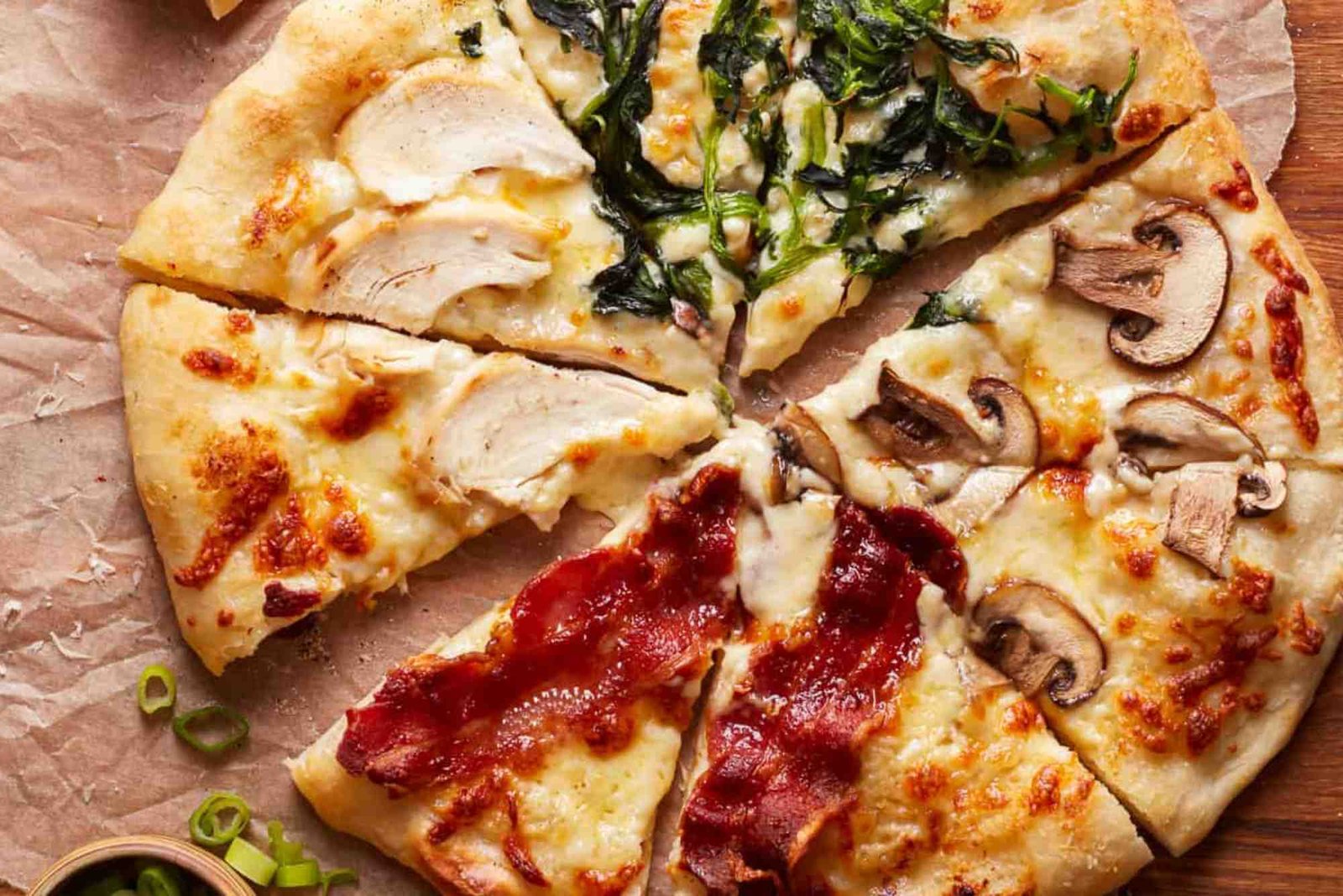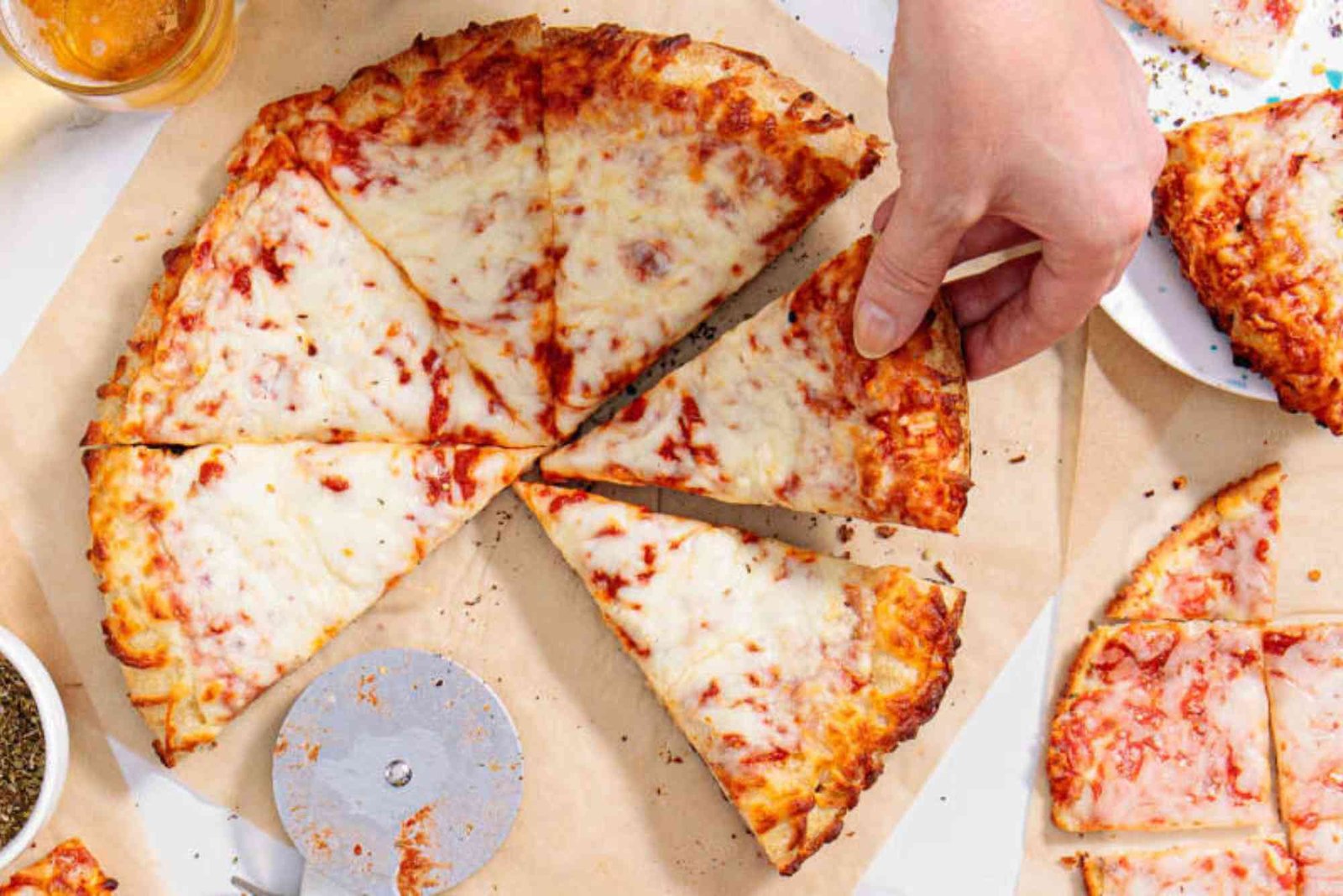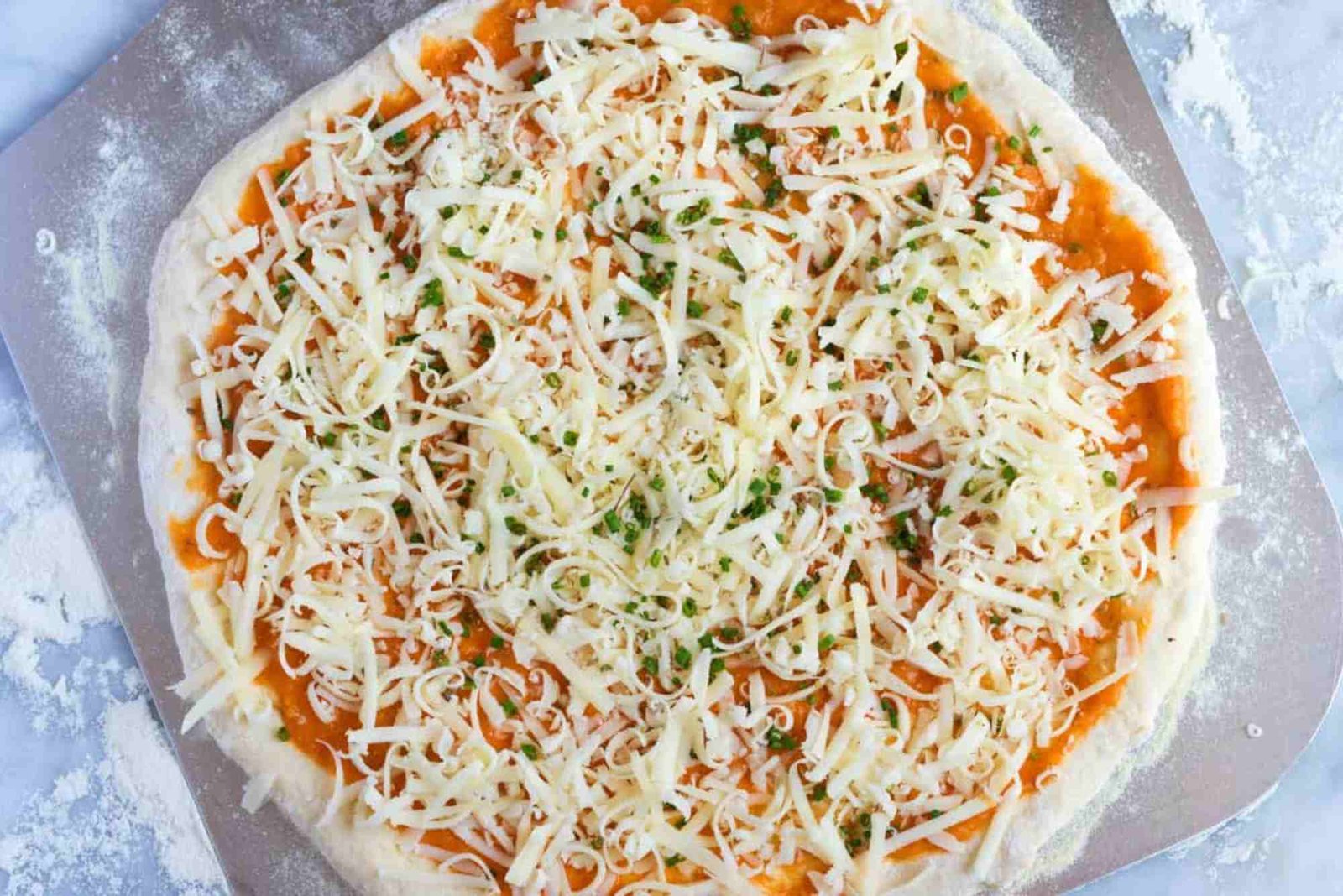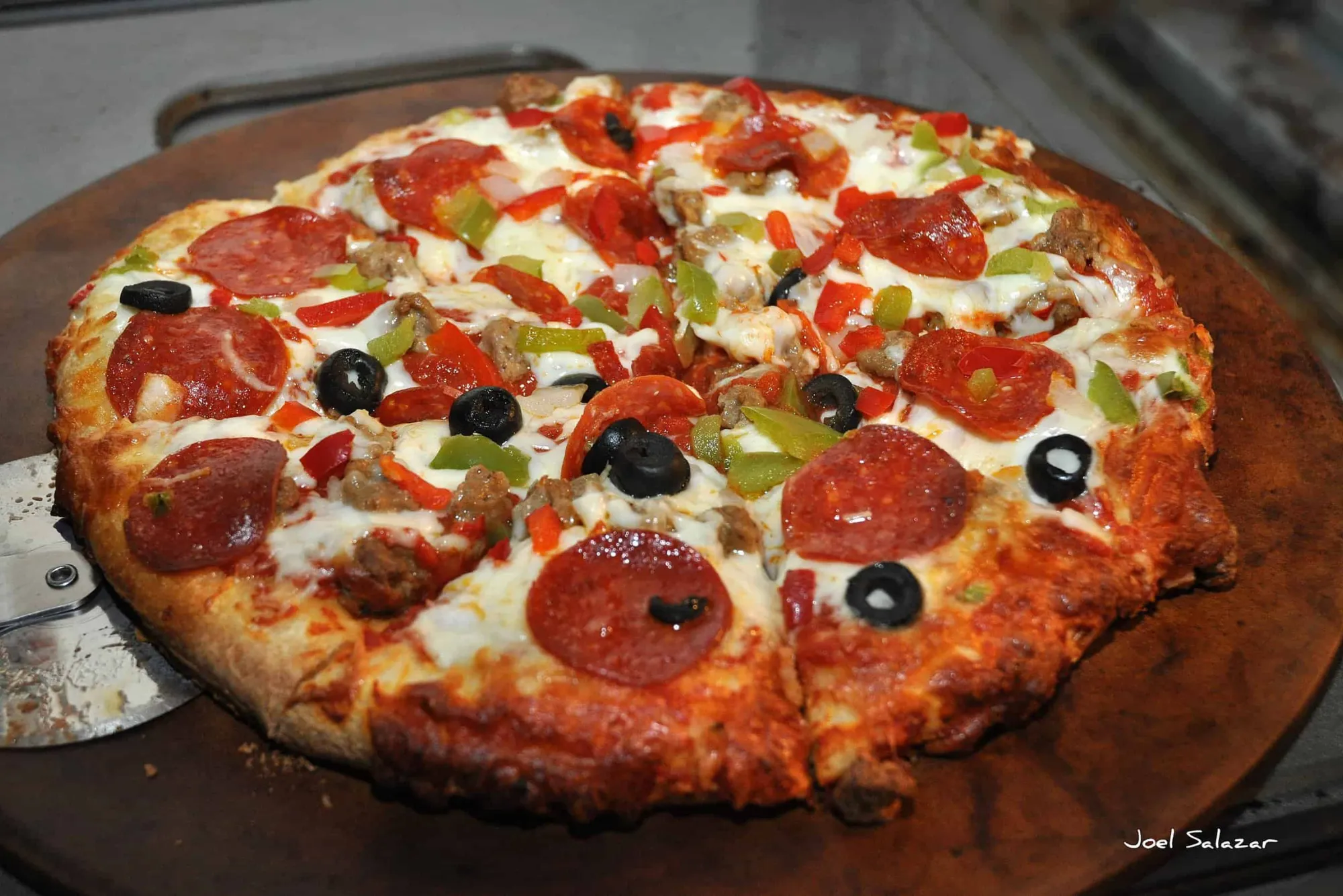Introduction
Pizza is a worldwide favorite, but not all pizzas are created equal. Beyond the classic red tomato base, pizza white sauce has grown in popularity among chefs and home cooks alike. Its creamy texture and rich flavor can transform a simple pizza into a gourmet experience. In this article, we take an in-depth look at what is pizza white sauce, how to master it, and avoid common mistakes that can ruin your pizza.
Understanding Pizza White Sauce
Pizza white sauce is a creamy, savory alternative to traditional tomato sauce. Typically made with butter, cream, garlic, and cheese, it provides a smooth and rich layer that complements various toppings. Unlike tomato sauce, which can be tangy and acidic, white sauce offers a subtle, buttery flavor that works well with chicken, mushrooms, spinach, or even seafood toppings.
Ingredients That Make a Perfect White Sauce
A successful pizza white sauce starts with high-quality ingredients. Butter and cream create the base, while garlic and onions provide depth. Some recipes incorporate flour to thicken the sauce, but this must be done carefully to avoid a pasty texture. Freshly grated Parmesan or Romano cheese adds the essential umami punch. Avoid pre-shredded cheeses, which often contain anti-caking agents that hinder smooth melting.
Cooking Techniques to Remember
The cooking process is crucial for achieving a velvety texture. Melt butter over medium heat, sauté garlic lightly, then slowly add cream while whisking continuously. Gradually incorporate cheese until fully melted. Overheating can cause the sauce to separate, resulting in an oily or clumpy mess. A gentle hand and constant stirring are key.
Tips for Making Pizza White Sauce
Making pizza white sauce may seem straightforward, but a few expert tips can elevate it from good to exceptional.
Balance the Flavors
Season the sauce lightly with salt, pepper, and optional herbs like oregano or thyme. Remember, pizza toppings often carry their own salt, so avoid over-seasoning. Taste as you go to maintain a balanced, creamy flavor that enhances, rather than overpowers, the pizza.
Use Fresh Ingredients
Fresh garlic, cream, and cheese make a noticeable difference in taste. Pre-packaged mixes can simplify the process but often sacrifice flavor. A homemade sauce using quality ingredients always produces a richer, more satisfying pizza experience.
Keep it Smooth
Avoid lumps by slowly adding cream to the roux or melted butter. Whisk continuously and maintain medium heat. If the sauce becomes too thick, add a splash of milk or cream to reach the desired consistency. The goal is a silky, spreadable sauce that glides over the pizza dough.
Common Mistakes to Avoid
Even experienced cooks can stumble when making pizza white sauce. Recognizing these common mistakes can save time and improve your pizza-making skills.
Overheating the Sauce
High heat can separate cream from butter, leaving an oily or grainy sauce. Always cook over medium heat and remove from the stove once the sauce reaches the desired consistency.
Using Pre-Shredded Cheese
Pre-shredded cheese contains anti-caking agents that prevent smooth melting. Always opt for freshly grated cheese to achieve a creamy, cohesive sauce.
Ignoring Dough Preparation
Even the best white sauce cannot save poorly prepared pizza dough. Ensure your dough is properly rested, rolled evenly, and baked at the right temperature to prevent sogginess or uneven cooking.
Overloading Toppings
White sauce has a delicate flavor that can be overwhelmed by too many toppings. Stick to complementary ingredients like mushrooms, spinach, chicken, or light cheeses for the best results.
Enhancing Your Pizza White Sauce
There are ways to customize your white sauce to suit personal tastes. Adding roasted garlic, fresh herbs, or a touch of nutmeg can create a signature flavor. Experiment with different cheeses such as fontina or Asiago for a more complex profile.
Pairing with Toppings
White sauce pairs exceptionally well with light, creamy, or earthy toppings. Spinach, artichokes, grilled chicken, and mushrooms are popular choices. For seafood pizzas, a white sauce base can enhance the flavors without overpowering delicate ingredients.
Storing and Reheating
If you have leftover sauce, store it in an airtight container in the refrigerator for up to three days. Reheat gently over low heat, adding a splash of cream if needed to restore smoothness. Never microwave at high power, as this can cause separation.
Pizza white sauce offers a creamy, versatile alternative to traditional tomato bases. By understanding the ingredients, techniques, and common mistakes, you can craft a delicious pizza that impresses family and friends. Remember to use fresh ingredients, monitor cooking temperature, and balance flavors carefully.
For those eager to explore further, here’s an in-depth look at what is pizza white sauce to enhance your culinary skills. You can also explore more food basics for additional tips. And for expert collaborations and recipe insights, check out our editorial partner.
Start experimenting with pizza white sauce today, and turn every pizza night into a gourmet experience.
FAQs
What is pizza white sauce made of?
Pizza white sauce is typically made with butter, cream, garlic, and cheese, creating a rich and creamy base.
Can I make pizza white sauce without cream?
Yes, you can substitute milk or a non-dairy alternative, but cream provides the smoothest, richest texture.
Is pizza white sauce healthier than tomato sauce?
White sauce is higher in fat due to butter and cream, but it contains less acidity than tomato sauce. Moderation is key.
How long can I store pizza white sauce?
Store in an airtight container in the refrigerator for up to three days. Reheat gently before use.
What toppings go best with pizza white sauce?
Light, creamy, or earthy toppings work best, including spinach, mushrooms, chicken, and certain cheeses.




